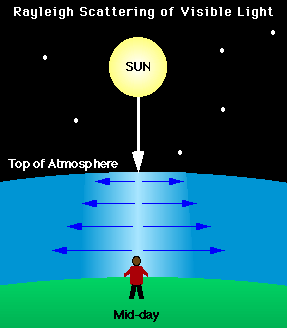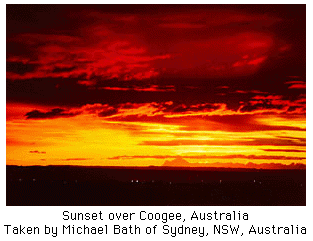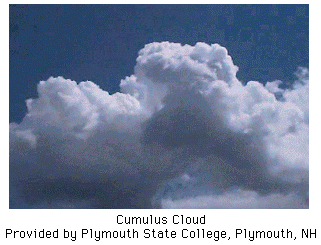
As we have learned in our discussion of cloud physics, aerosols
are vital to the production of clouds in our atmosphere. Most
clouds are high above us, and while they may cause visibility
problems for pilots and star gazers, generally, they do not
hinder our daily lives down here on the surface too much.
However, air quality researchers are growing more concerned about
the accumulating effects that increasing concentrations of
aerosols and other pollutants are having on the visibility at and
near the surface of the earth. The same physics that combine
water vapor and aerosols aloft forming the many types of clouds
we observe, produce other meteorological anomalies at the surface
which can greatly restrict visibility (not to mention the health
risk they pose by contaminating the air we breathe). In the
remainder of this session, we will take a quick look at how light
is scattered by the various components in our atmosphere, then
we will discuss a few of these phenomena that can greatly
restrict visibility in our atmosphere.

Scattering Light
Have you ever wondered why the sky is blue? Or sunsets red?
If it were not for the atmosphere which blankets our planet,
there would be no blue sky. In fact, the sky would look just as
it does at night, black. Many of the gases in our atmosphere,
such as oxygen and nitrogen, and the smallest of the aerosols,
are effective at scattering incoming short wavelength
radiation from the sun. (You can view an illustration of the electromagnetic
spectrum in a separate window.) The blue sky and red sunsets we
see are the visual effects created by this scattering of short
wavelengths. The scattering of selective wavelengths, as in
this case, is called Rayleigh scattering. The illustration
to the right shows how the shorter wavelengths which our eyes
detect as blue when mixed, are scattered at a right angle. If the
sun is directly overhead, the sun and sky look almost white while
the sky is blue off to the sides in the direction of the
scattered light.
 At sunset and sunrise, the sun is low in the sky and the light
rays must pass through a much thicker layer of atmosphere to
reach our view. Again, the shorter wavelengths are scattered
more than the longer wavelengths. They are actually scattered
away from our sight so that all we see are the long wavelengths
which produce the red sunsets.
At sunset and sunrise, the sun is low in the sky and the light
rays must pass through a much thicker layer of atmosphere to
reach our view. Again, the shorter wavelengths are scattered
more than the longer wavelengths. They are actually scattered
away from our sight so that all we see are the long wavelengths
which produce the red sunsets.
In contrast with Rayleigh scattering, Mie scattering is
non-selective. Mie scattering is the scattering of all the
visible wavelengths approximately equally. One of the more
common effects of Mie scattering is the bright white cumulus
cloud tops we often observe on warm, sunny, summer afternoons.
While water is transparent and clouds are mostly water, as you
have probably noticed, clouds are not transparent. This is due
to the effect that small cloud droplets have on the incoming
light rays.  Cloud droplets are
effective at scattering all wavelengths of visible radiation.
When the entire visible spectrum is scattered and mixed, it
produces white light. This non-selective Mie scattering by cloud
droplets, as light rays pass through a cloud, cause the cloud to
appear bright white. The larger aerosols, like water droplets,
are also effective at scattering all wavelengths of visible
light. Now, lets look at a few ways aerosols can reduce
visibility by scattering light at the surface.
Cloud droplets are
effective at scattering all wavelengths of visible radiation.
When the entire visible spectrum is scattered and mixed, it
produces white light. This non-selective Mie scattering by cloud
droplets, as light rays pass through a cloud, cause the cloud to
appear bright white. The larger aerosols, like water droplets,
are also effective at scattering all wavelengths of visible
light. Now, lets look at a few ways aerosols can reduce
visibility by scattering light at the surface.
 The
Shodor
Education Foundation, Inc.
The
Shodor
Education Foundation, Inc.